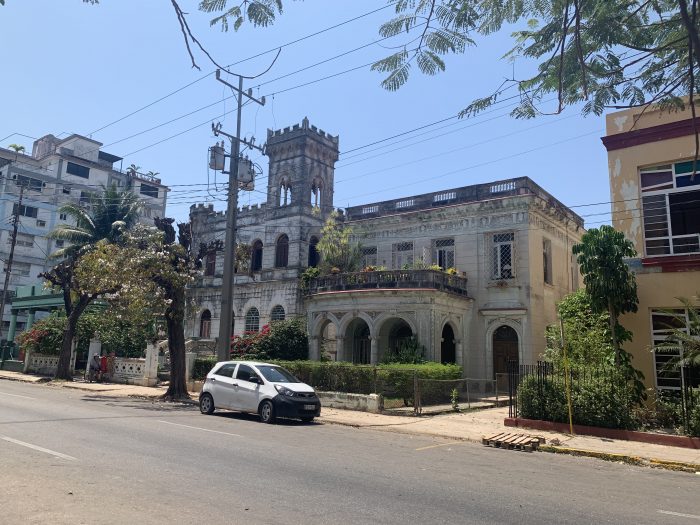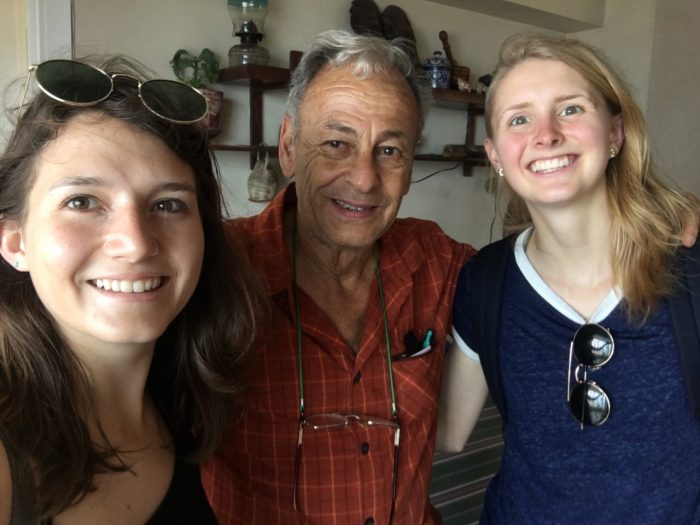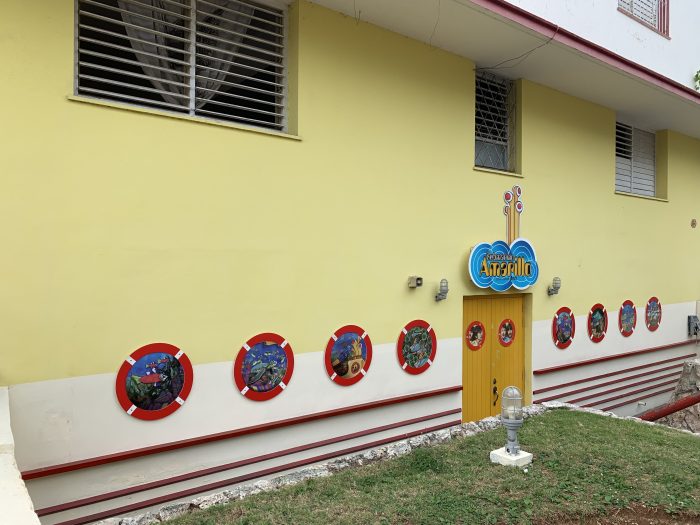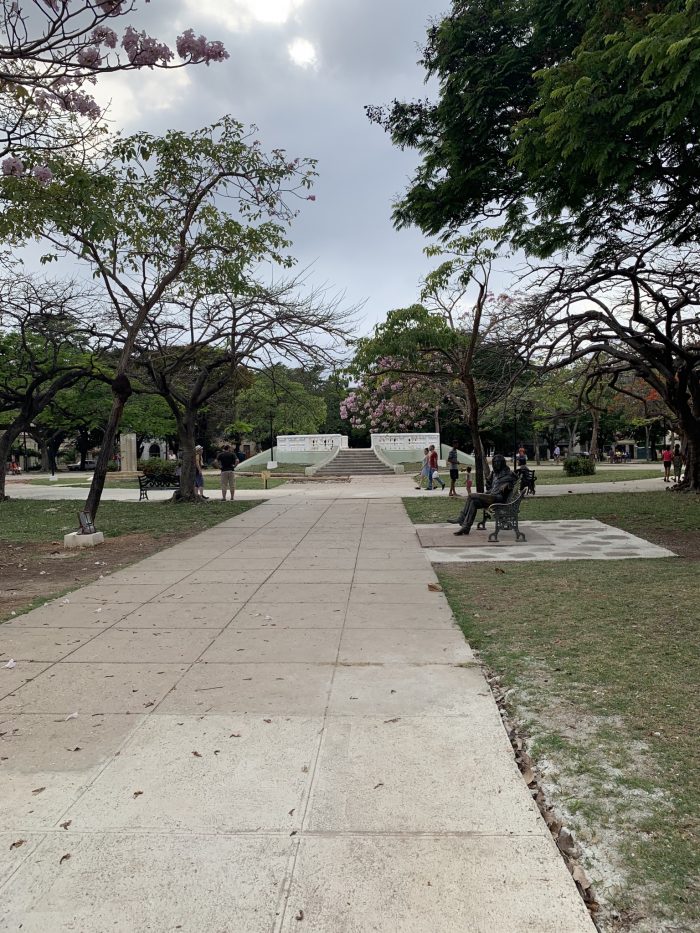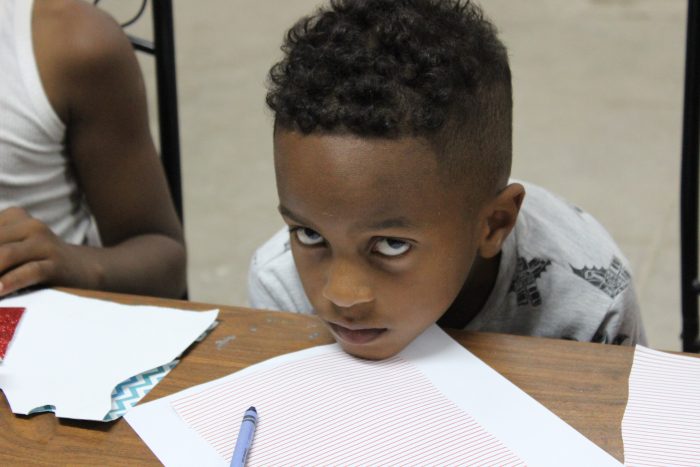Day 2
The next morning we got an earlier start, heading to the Malecón for a morning jog. Evyn and I felt so free and happy as waves crashed over the coast, drenching us all the way to Hotel Riviera. We returned to take incredible cold showers.
Then it was off to Habana Vieja, Old Havana, tourist central. As soon as we arrived, we approached a couple taxi drivers waiting at Parque Central. These drivers camp out in the area with their particularly colorful, shiny cars, offering tourists driving tours of the city. The first man we approached quickly got distracted, trying to catch some tourists, so we ended up speaking with his friend Alejandro. Alejandro was short, maybe 5’5”, wearing jeans, a clean white button down, and a classic Cuban hat. His light blue eyes, contrasted with his tanned skin, looked at us directly and sincerely as he spoke.
He likes tourists, for the most part. Most people are very polite, but of course, like any job, some people are more “exigente” — needy. His job is a little like fishing, he says. Sometimes you catch a bunch of tourists, other times none. He takes them around the city allowing them to pick and choose what they want to see. If it’s someone who doesn’t speak English nor Spanish, he just does the best he can.
Alejandro invests lots of time and money into his car, taking one day a week to do maintenance. “What will happen when these cars stop working?” I asked. “They’ll always work!” He replied with a dark laugh. He elaborated saying that like a transplant, they’ll need to replace the engines and other features with newer models so that the cars’ hearts keep beating. But they’ll always beat.
Is Cuba changing? For him, like others we’ve spoken to, political change is separate from day-to-day change. His life in the past 5 years (when Obama warmed relations with Cuba) hasn’t changed drastically at all. And, like most Cubans, he has no intentions of moving. He’d just like to travel. Just not to the US.
We continued around the square, past Capitolio, as Evyn tried to locate an abandoned theater she and Mitra encountered last summer. After doing almost a full circle, she finally spotted it. We had been hoping to interview a man named Reinaldo who actually lives inside the place, has cared for it for years. He had said he’d be displaced once the building got renovated.
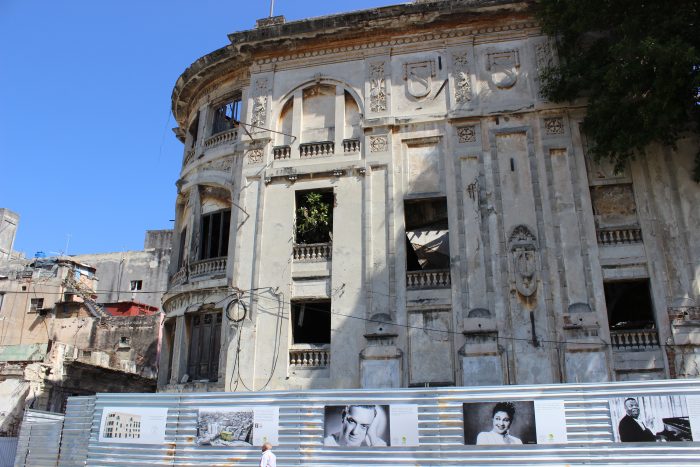
Well, it’s going to be renovated.
The entire exterior was boarded up, with shiny placards detailing the restoration project. One sentence particularly affected me, noting how like many places in Cuba, the theater “is found in a lamentable state of disrepair.”
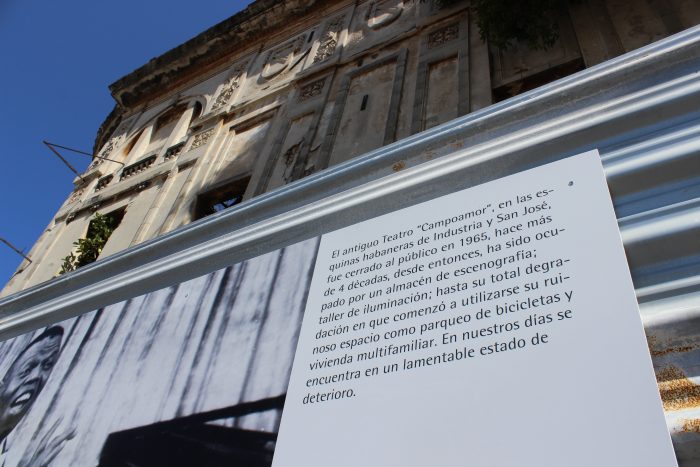
Hot and sweaty and disappointed, we decided to get lunch at our favorite crepe place. I couldn’t help but note that eggs were available at this place in tourist land, but not in the neighborhood over. We had a lovely meal, aside from the tourists next to us unapologetically stating a bit too loudly and too slowly, “JUST. HAM. AND. CHEESE.” Without even attempting to say “jamón y queso,” clearly printed next to the English translation on the menu.
We took off toward Plaza Vieja, where there are several galleries we enjoy. The first stop was the Fototeca. The first exhibit was a miniature display of crumbling buildings, entirely made from soap. It hit close to home.

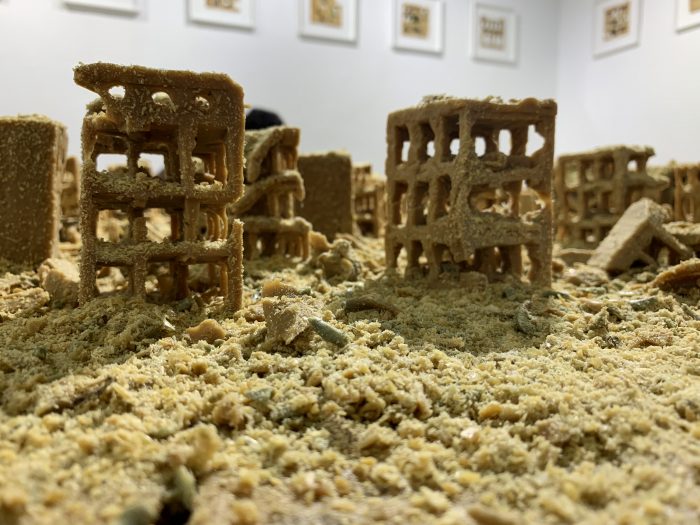
Out in the patio was an exhibition of portraits taken in Morocco, very vibrant and fun. And finally, upstairs was a picture and video display by a Spanish artist protesting the effects of rapid technological growth on the economy. A little dizzying, honestly.
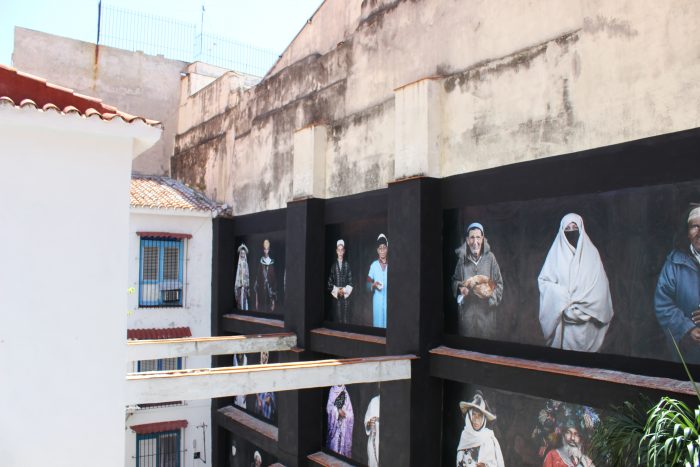
For this month in Havana, there is a big arts festival called the Bienal (biennial) going on. Across the plaza was a gallery showcasing work for the event. This exhibit was fascinating. Essentially, three Colombian artists traveled all over Cuba for 15 years. At each stop, they would take a group of 3-5 Cubans of different ages, genders, and backgrounds and ask them a question: “Where do you see yourself in 10 years, and what do you have to do to get there?” Then they were provided a set of colorful blocks and would have to make a construction representing their answer, assigning each color block a value. For instance, they could choose the red blocks to represent love, the yellow, friendship. The result was many unique structures, all with meaning of their own.
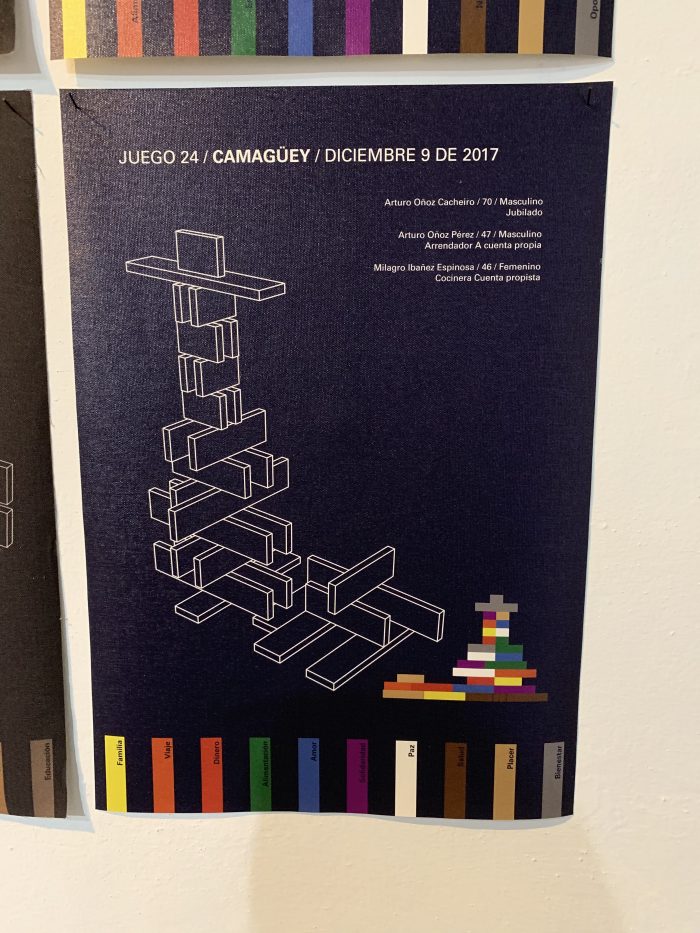
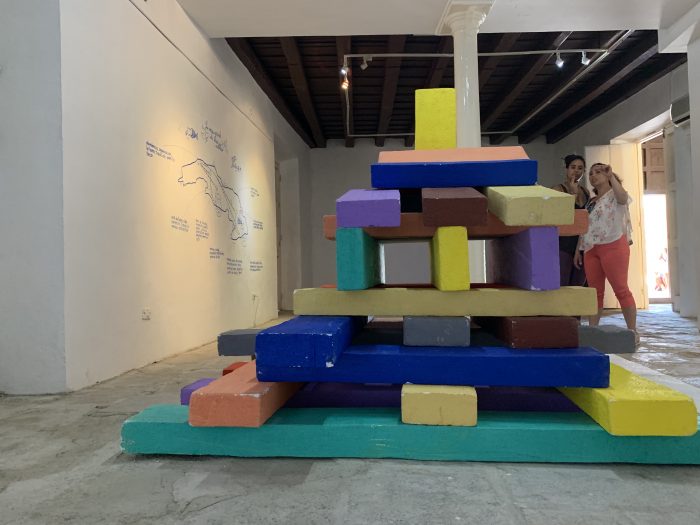
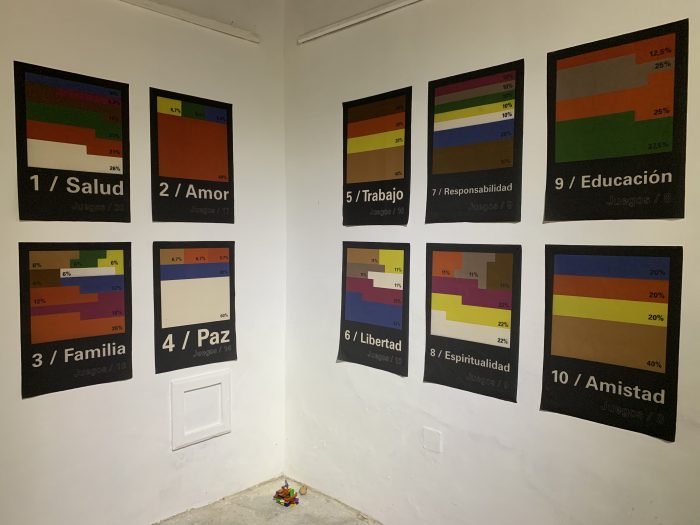
All of this was explained to me by Graciela, the old woman caring for the exhibit. I initially did not quite understand what I was examining, but she clarified in detail the project. After asking her so many questions, she eventually gave us a furtive glance behind her and said, “Come with me.” She presented us with a book on the Colombian artists’ collective, saying, “This is the last copy I have. Please, take it.” We were taken aback by her generosity and tried to dissuade her, to no avail. I suppose most tourists don’t take nearly as much interest in the work.
The rest of the gallery had some interesting works, but not nearly as cool as this one. Next was walking down Mercaderes, home of the famous Museo de Chocolate and their chocolate fríos on the way to Plaza de las Armas. Once we reached Obispo, the main tourist strip, we spotted a couple of Cuban women posing with tourists for pictures. They were dressed in classic colorful rumba outfits, their dresses ruffled and donning head wraps. Evyn suggested we approach, and though I was feeling lazy, I reluctantly agreed. I’m glad I did.
We did our usual schpeal about our project, asking one of the women about her experience with tourists. She had an official badge declaring her certified by the government as a “costumbrista.” She openly admitted that the tourists have gotten worse in the last 1-2 years. She couldn’t really pinpoint it to one behavior or group, just that people were less respectful. So many people pass her and take her photo without paying her, or say they’ll pay her, and then don’t. In general, interacting with tourists is fine, pleasant, but the vibe has gotten increasingly negative.
I said, “So, tourists take a picture with you and they bring it home. And that’s the representation of Cuba they have. Are you satisfied with that?” She looked at us with resignation. She simply replied that tourists will come and pay her whatever, $2, $5 (in fact, some tourists came by while we were talking and had the audacity to pay her in euros, as if she has time to wait in line to exchange them) and bring the photo home. They’ll frame it and it’ll be worth much more than what they paid. And it’s just unfair.
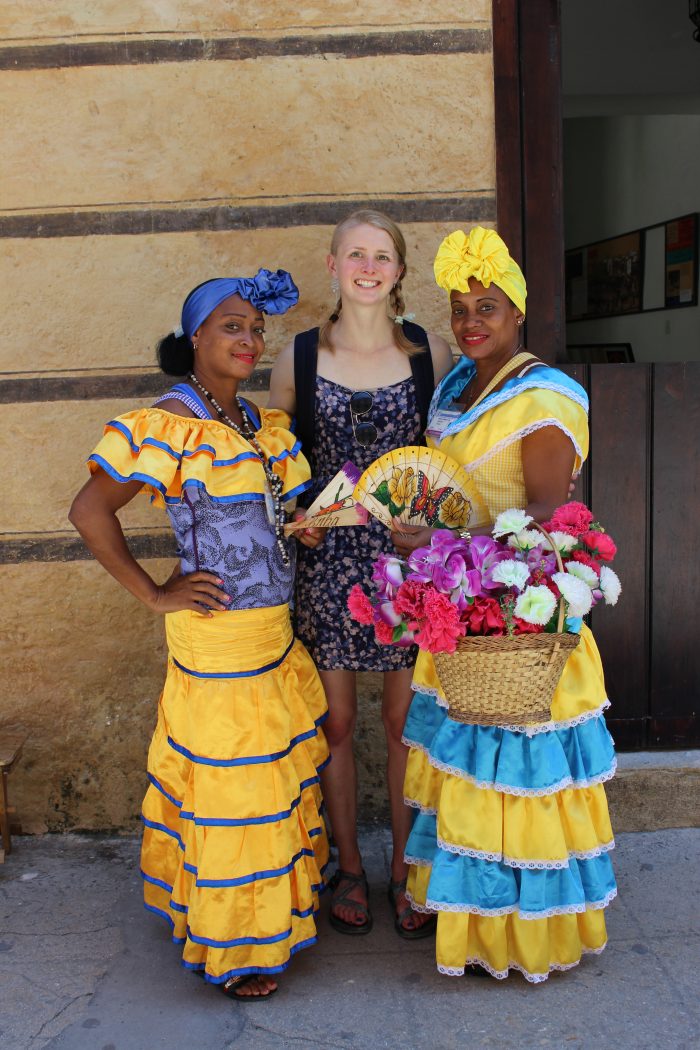
We had planned to tip her for simply speaking for us, so we thanked her for her time and gave her some CUCs. She then insisted we take a picture with her, which made us feel sheepish, but we did so anyway, to respect her wishes. I left with a sour taste in my mouth, wondering if tipping her a small amount or a large amount would be more patronizing, and how much a proper tip would even be to someone who spends her life taking photos with largely ignorant tourists.
The final stop of the day was at Clandestina, our favorite design shop and the only Cuban company that successfully operates in the United States, too. The cashier recognized us immediately (we really like their stuff…check them out:
https://clandestina.co/ ) and spoke to us briefly, though the store was busy. They also operate in South Carolina and everything made there is shipped and sold in the US, while the same products are made and sold solely in Cuba. The Cuban government shut down their website, but they’re still going strong, the internet sales increasing. The store ebbs and flows, but overall has enjoyed good success, with about an equal amount of tourist versus Cuban visitors. We thanked him for his time and said we’d be back.



